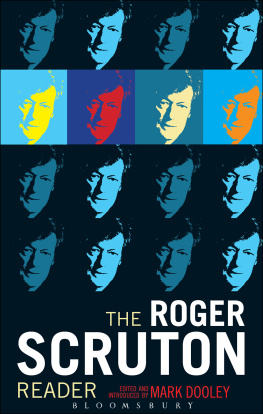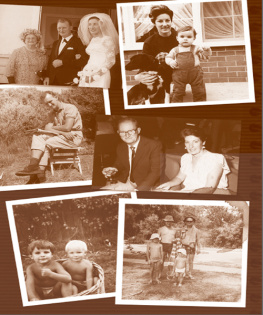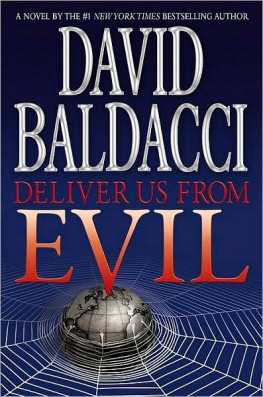
This edition is published by BORODINO BOOKS www.pp-publishing.com
To join our mailing list for new titles or for issues with our books borodinobooks@gmail.com
Or on Facebook
Text originally published in 1956 under the same title.
Borodino Books 2018, all rights reserved. No part of this publication may be reproduced, stored in a retrieval system or transmitted by any means, electrical, mechanical or otherwise without the written permission of the copyright holder.
Publishers Note
Although in most cases we have retained the Authors original spelling and grammar to authentically reproduce the work of the Author and the original intent of such material, some additional notes and clarifications have been added for the modern readers benefit.
We have also made every effort to include all maps and illustrations of the original edition the limitations of formatting do not allow of including larger maps, we will upload as many of these maps as possible.
DELIVER US FROM EVIL
THE STORY OF VIET NAMS FIGHT TO FREEDOM
BY
THOMAS A. DOOLEY, M.D.
TABLE OF CONTENTS
Contents
TABLE OF CONTENTS
DEDICATION
TO THE MEN OF THE U.S. NAVY AND TO THE COURAGEOUS ESCAPEES OF NORTH VIET NAM WHO, TOGETHER, HAVE SHOWN ME THE TRUE NOBILITY OF LIFE.
FOREWORD
by ADMIRAL ARLEIGH BURKE,
US. Navy, Chief of Naval Operations
The United States Navy has always been proud of its men, proud of their character, of their American ideals and convictions.
The heart of the Navy is found in its menskilled, imaginative, courageous, alert, enthusiastic and kindly men. No organization in the world depends so much upon the individual initiative of its men as do we in the Navy.
The Navy is essentially a combat organization but one whose primary purpose is to support our government to the utmost both in peace and war. As a result, Navy men must continuously train thousands of other men to accomplish skilfully a myriad of undertakings. The Navys training program is a never-ending chain. It teaches the real meaning of service to ones fellow men. It also teaches men to become technically proficient and to utilize the most modern tools in existence.
Todays naval traditions have been built by generations of men like young Doctor Dooley who have served their country well under arduous and challenging circumstances. The American sailor is oft-times (as was Doctor Dooley) confronted with situations in which proper courses of action could not have been pre-planned or pre-determined.
Therefore in his training, whether as line officer, doctor or boatswains mate, each individual must have prepared himself to assume responsibility and to act in accordance with his best judgment. Every Navy man must know that the life of his ship, and the success of his country, may sometimes depend upon his willingness and his ability to act boldly and independently for the common good.
Hence sailors will read with pride, as will all Americans, the courageous exploits of the young lieutenant, Doctor Dooley. His humanitarian actions are the kind of good deeds that will remain indelibly impressed in peoples heartsgood deeds that neither propaganda nor brainwashing will ever stain.
Through the tireless work of his small naval unit in the huge refugee camps of the hostile and turbulent North Viet Nam country, he has won for America the love and admiration of thousands and thousands of refugees who passed through these camps on their historic march to freedom.
Lieutenant Dooley, a naval medical officer on independent duty, contributed greatly to the welfare of mankind and to an understanding of the fundamental principles of the United States, as he participated in this epoch-making period of world history. In DELIVER US FROM EVIL he has written that story with freshness, clarity and force. It is a story that will be told and retold.
It is a story of which the United States Navy is proud.
CHAPTER IENSIGN POTTS CHANGES HIS MIND
The Hickham Field airport terminal was jammed with military personnel and their dependents. November in Hawaii is lovely; when a light misty rain is falling, the Islands are enchanting. And I was going home. I was going home . Two weeks in Hawaii, winding up my two-year overseas stint, went fast and gave me two great moments. The second moment occurred right at Hickham Field.
The scene of my first was a U.S. Navy holy-of-holiesthe Command Conference Room for Pacific Fleet Headquarters at Pearl Harbor. There I was to brief Admiral Felix B. Stumps staff on my recent experiences in South east Asia. Admiral Stump was the Commander-in-Chief of the Military Forces of the Pacific. I was just a twenty-eight-year old Lieutenant (recently junior grade) in the Navy Medical Corps, in command of nothing whatsoever.
But I had had rich duty in the Orient. I had been stationed in the city of Haiphong, in North Viet Nam, Indochina and assisted in the epic Passage to Freedom that moved some 600,000 Vietnamese from the Communist North to the non-Communist South.
Indo-China had been a French colony. But on May 7, 1954, after eight years of bloody colonial and civil war, the key fortress of Dien Bien Phu had fallen to the Communists, and soon thereafter, at Geneva, the Red victory was nailed down in a peace treaty that arbitrarily split an ancient country in half. One of the treatys terms said if they wished, non-Communists in the north would be allowed to migrate to the south. Hundreds of thousands desperately wished to do so and most of those who made the trip traveled through Haiphong. And that was where I came in.
Needless to say, Admiral Stumps staff had received regular reports on the operations at Haiphong, probably with frequent enough mentions of a young Irish-American doctor named Dooley. But evidently they wanted more, or at any rate Admiral Stump thought they did. So I was ordered to stop over on the way home to deliver a briefing, which is a lecture in uniform.
It was delivered in a room that collects stars. On this day, when I addressed some eighty officers for one hour, I counted sixteen of those stars on the collars in the front row. Captains filled the next few rows. Commanders brought up the rear.
Rank doesnt scare me too much, but when it up on a man in this wholesale fashion it does shake him a little. But I told these men about the hordes of refugees from terror-ridden North-Viet Nam and how we processed them for evacuation. I told them how these pathetic crowds of men, women and children escaped from behind the Bamboo Curtain, which was just on the other side of Haiphong, and of those who tried to escape and failed. I told of the medical aid given them in great camps at Haiphong and of how, in due course, they were packed into small craft for a four-hour trip down the Red River, to be reloaded onto American ships for a journey of two days and three nights 1000 miles down the coast to the city of Saigon, in South Viet Nam.
I told them individual tales of horror that I had heard so many nights in candlelit tents, in the monsoon rains of that South China Sea area. I even got in some complaints. Why hadnt certain missions been carried out more effectively? Why had American naval policy dictated such and such a course? So for one hour I talked. They all listened intently.











